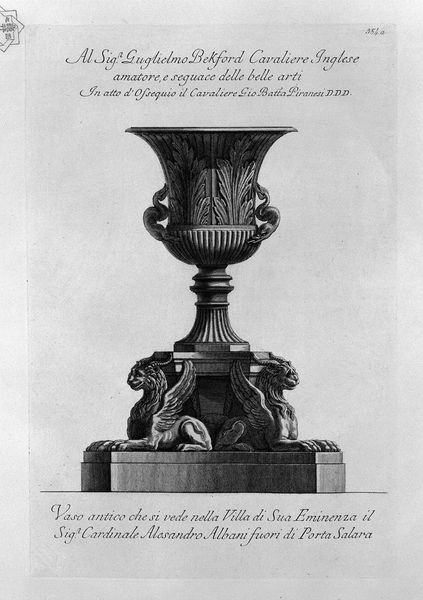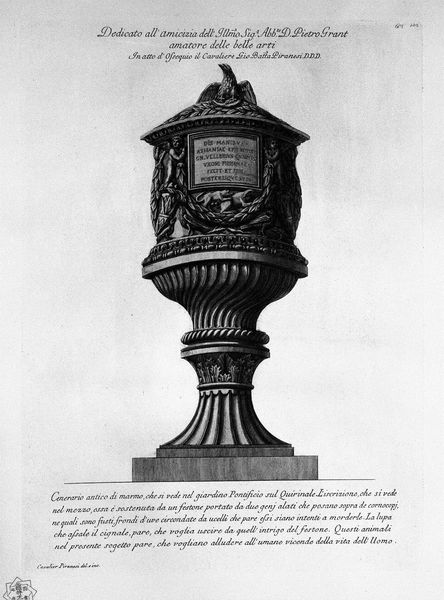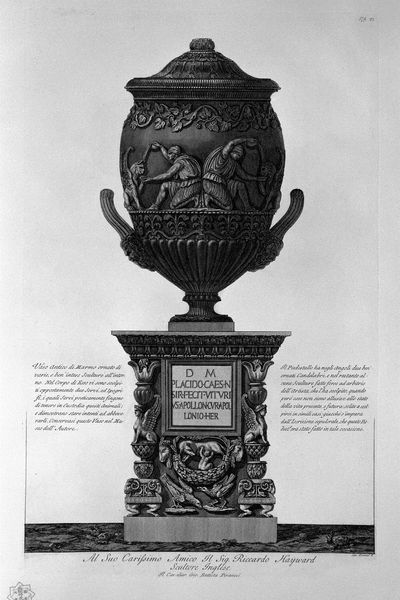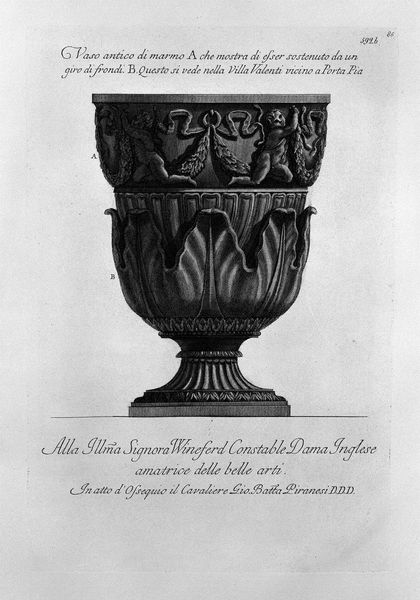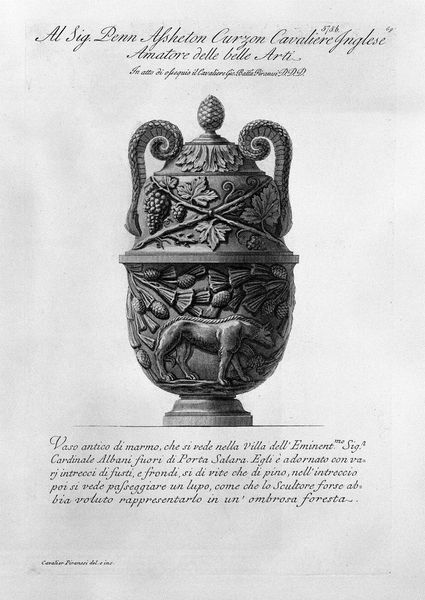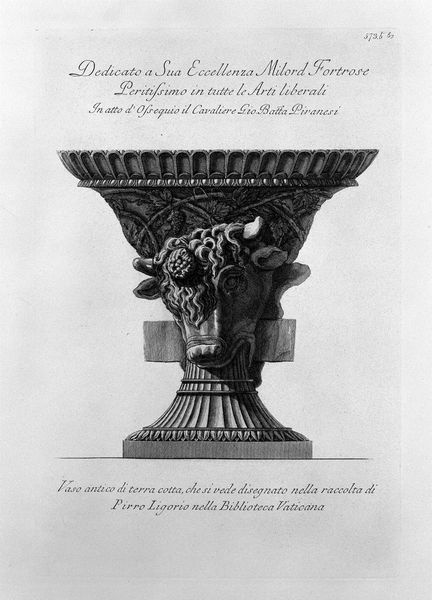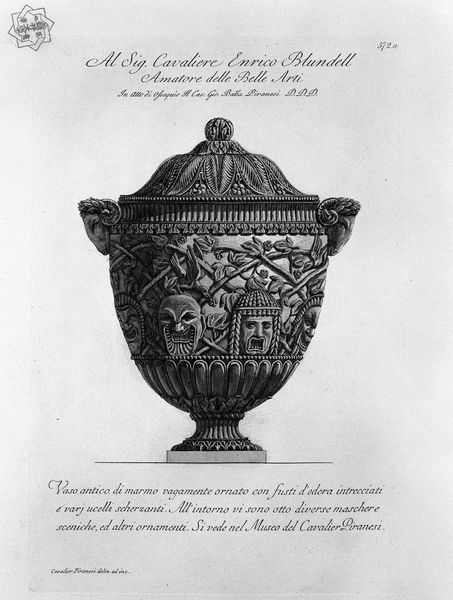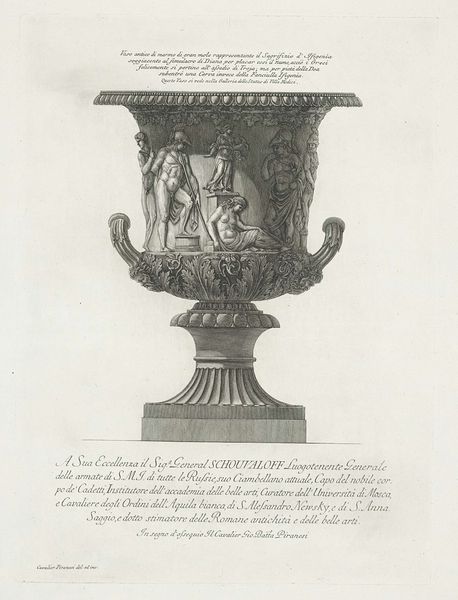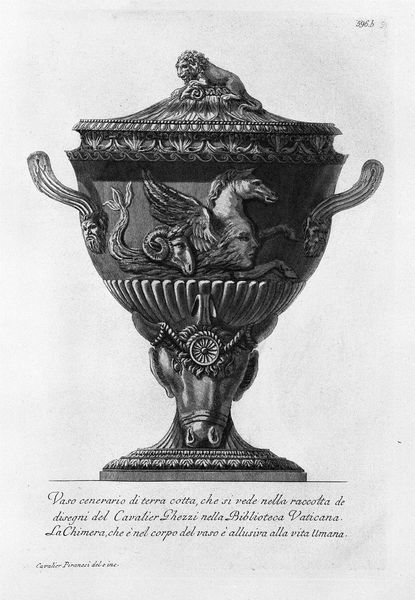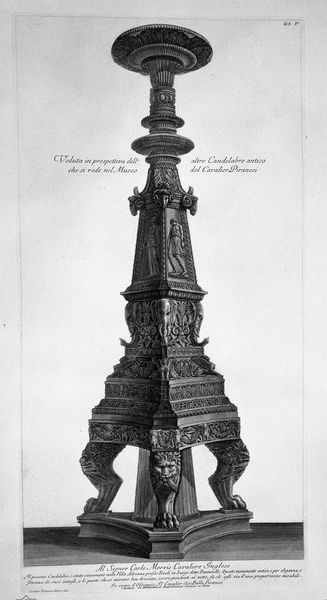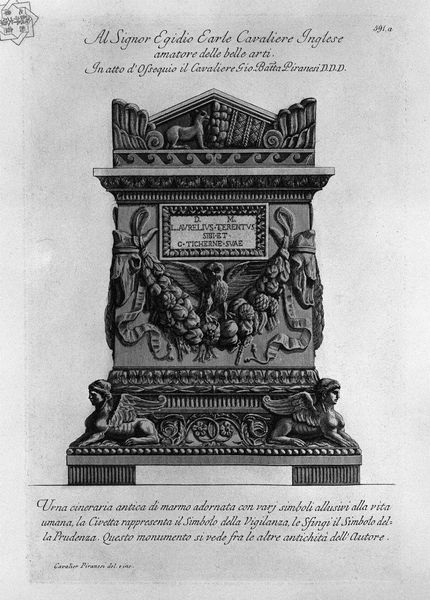
Antique vase of marble great deal in the Palace of the Villa Borghese
0:00
0:00
drawing, print, etching, ink, graphite, engraving
#
pencil drawn
#
drawing
#
neoclacissism
# print
#
etching
#
landscape
#
ink used
#
ink
#
ancient-mediterranean
#
graphite
#
graphite
#
engraving
Copyright: Public domain
Curator: Let's delve into this print by Giovanni Battista Piranesi titled "Antique vase of marble great deal in the Palace of the Villa Borghese." What strikes you immediately about it? Editor: The weight. Not physical weight, but visual. The etching technique, all those dense lines, make the marble seem almost… oppressive. There's a real emphasis on the labor involved in its creation, both the original sculpture and Piranesi's reproduction. Curator: That density also reinforces its ties to antiquity. Piranesi's broader project involved re-imagining and, in some ways, romanticizing the past. How does the portrayal of the vase—a symbol of classical grandeur—speak to 18th-century societal ideals and power structures? Editor: Well, marble itself becomes a loaded material here. It signifies wealth, certainly, but also control over resources, artistic skill. Piranesi is highlighting not just the finished object, but also the industry required to produce it and transport it. Curator: And look closer at the figures carved on the vase itself—Fauns and Bacchantes. Their presence underscores the performative aspect of wealth and power. This isn't just about owning a beautiful object; it's about displaying a certain level of knowledge and sophistication connected with this kind of historicism. Editor: I see your point about performance. There’s almost a theatrical quality to the way Piranesi has arranged everything within the composition, really emphasizing how the piece interacts with space, both literally and ideologically. Curator: The inscription dedicating the artwork to General Schouvaloff tells another story. It grounds the object in a specific social exchange, revealing patronage networks. This acknowledges both art and political capital as essential currencies within 18th-century European high society. Editor: It underscores for me, too, how the reception and interpretation of such objects were—and remain— deeply embedded within systems of power. Piranesi wasn’t simply documenting this object; he was contributing to its ongoing value construction. Curator: Indeed. I think this print prompts us to confront complex issues surrounding appropriation, class, labor, and legacy. Editor: Agreed, an intricate dance between object, artist, patron, and ultimately, history itself. It leaves one musing on the relationship between materiality and societal structures across time.
Comments
No comments
Be the first to comment and join the conversation on the ultimate creative platform.
